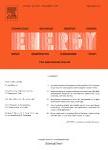版权所有:内蒙古大学图书馆 技术提供:维普资讯• 智图
内蒙古自治区呼和浩特市赛罕区大学西街235号 邮编: 010021

作者机构:Nanjing Univ Sci & Technol Sch Energy & Power & Engn Nanjing Peoples R China Bolgatanga Tech Univ Dept Elect & Elect Engn Bolgatanga Ghana Univ Ghana Sch Nucl & Allied Sci Dept Nucl Engn Atom Energy Accra Ghana Ghana Atom Energy Commiss Nucl Power Inst Accra Ghana Lulea Univ Technol Dept Civil Environm & Nat Resources Engn Struct & Fire Engn Div S-97187 Lulea Sweden Johns Hopkins Univ Whiting Sch Engn Baltimore MD 21211 USA Univ Energy & Nat Resources UENR Sch Energy Dept Renewable Energy Engn Sunyani Ghana Univ Energy & Nat Resources UENR Reg Ctr Energy & Environm Sustainabil RCEES Sunyani Ghana
出 版 物:《ENERGY》 (Energy)
年 卷 期:2025年第319卷
核心收录:
学科分类:0820[工学-石油与天然气工程] 08[工学] 0807[工学-动力工程及工程热物理]
主 题:Monte Carlo simulations Predictive modeling Renewable energy optimization XGBoost algorithm Solar photovoltaic systems Energy policy
摘 要:This study analyzes the performance and predictive modeling of solar photovoltaic (PV) systems at the Bui Generating Station in Ghana using the XGBoost (Extreme Gradient Boosting) algorithm. The predictive model, validated through Monte Carlo simulations, demonstrates measured stability across perturbation scenarios. Distribution analysis confirms appropriate parameter bounds, while error analysis demonstrates consistent pattern preservation across simulation scenarios. The study quantifies the relative influences of environmental factors, particularly the interplay between temperature, irradiance, and humidity (correlations ranging from -0.33 to 0.36). These findings provide insights for system operation while acknowledging the complex, often weak coupling between environmental parameters. Seasonal performance analysis reveals distinct optimization windows, with the Post-Rainy season showing the highest stability (PR: 0.986 +/- 0.082) and optimal enhancement potential. Sensitivity analysis identifies critical operational thresholds, including performance transitions at 80 % relative humidity and optimal temperature ranges below 32 degrees C, where each 1 degrees C reduction yields 0.45 % efficiency gain. The study establishes specific optimization strategies including automated cleaning systems triggered at 85 % peak irradiance, yielding 2.5 % efficiency improvement, and enhanced inverter response protocols during peak generation periods, achieving a 3.2 % performance gain. These findings inform practical implementation frameworks for performance optimization, contributing to improved energy generation efficiency and system reliability.